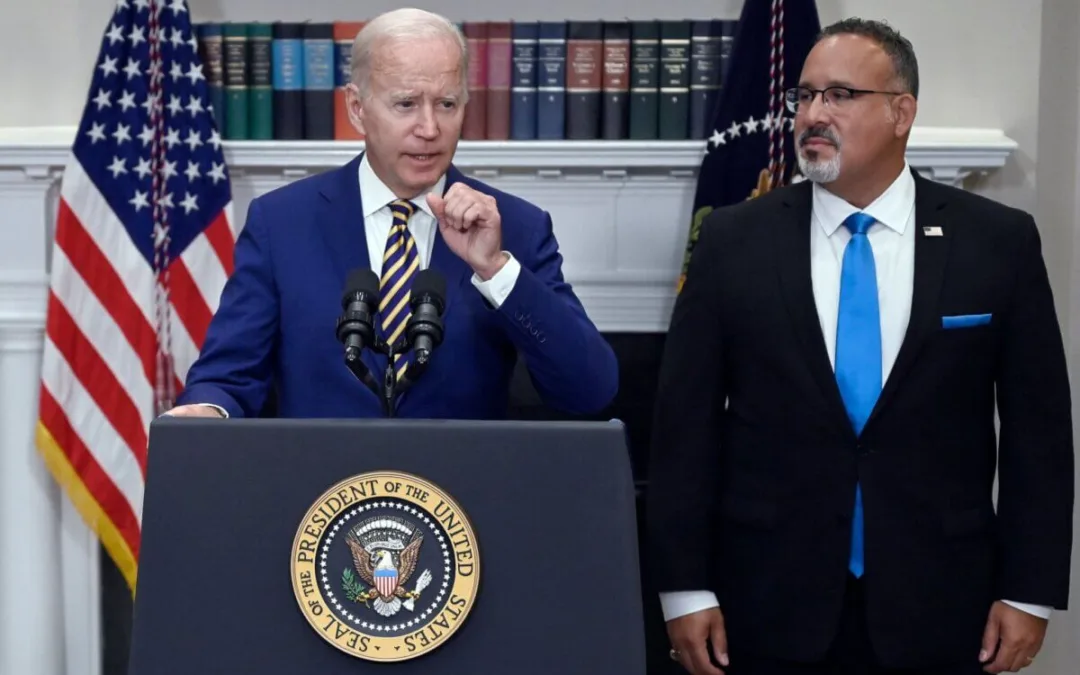
Image via Associated Press/David J. Phillip
With nearly 30% of the K-12 student population projected to be Hispanic by 2027, education needs to be a priority for Latino voters.
On Tuesday, March 17, voters in the states of Florida, Illinois, Ohio, and Arizona will cast their vote in primaries for the 2020 presidential election. Access to healthcare and electability are reasonably top of mind, yet there are some policy proposals that impact Latinos more than others, immigration is the obvious one, but education is at the heart of fulfilling the American Dream.
It is projected that by 2027, 1 in 3 students in the K-12 public schools in the United States will be Hispanic. Latino voters, these are our kids; they are the future of this country. Therefore, the quality of the education that our children have access to is a national imperative for which we are uniquely positioned to advocate.
In Florida, 1 in 5 of the eligible voters are Hispanic, yet their kids make up nearly a third, 29%, of the K-12 public school student enrollment. In Arizona, the figures are even more staggering, where 23.6% of the eligible voters are Hispanic, but they represent the interests of nearly half, 44%, of the K-12 public school students in the state who are Hispanic. Latino voters participating in the remaining Democratic party primaries have two choices and here’s what you need to know about the K-12 education plans of Joe Biden and Bernie Sanders.
WHAT THEY HAVE IN COMMON
- Triple funding for Title I – Both proposes to significantly increase investments in education through Title I funds, which are a federal program that funds school districts with a high percentage of students from low-income families. The largest racial/ethnic group of students that benefit from Title I funding are Hispanics, accounting for 37% of the children in Title I schools.
- Increase teacher wages and benefits – Both proposals are prioritizing better compensation for teachers. Sanders calls for a minimum starting salary of $60K for teachers, whereas Biden’s plan would require Title I recipients to prioritize using the funds to increase teacher pay.
- Strengthen the Individuals with Disabilities Education Act (IDEA) – The IDEA funds support the learning of 7 million students with disabilities that impact learning such as autism, speech impairment, and developmental delays, of which 910,000 (13%) are Hispanic, however, this program has been chronically underfunded. The Biden plan calls for funding 40% of the cost of special education, which is what the original bill requires, whereas the Sanders plan calls for increasing this federal funding to 50%. Both plans recognize that the education of students with disabilities needs to be prioritized.
- Increase educator diversity – Research has shown that having a teacher that matches your race/ethnicity can have positive effects, yet while currently, a quarter of the students in the US are Hispanic, less than 10% of the teachers are Hispanic. This means our Latino kids have less of a chance of having teachers that reflect them in their classrooms. Both campaigns propose to make progress in diversifying the teaching ranks through various means, including support of colleges that qualify as Minority Serving Institutions (MSI’s) that are more likely to train diverse teachers.
- Expansion of community schools – Both education proposals support the funding and development of innovative community schools that provide students and families wrap-around services such as healthcare, social services and educational opportunities such as English as a Second Language programs through their schools.
WHAT SEPARATES THE PLANS
- Meeting mental health needs – Acknowledging that 1 in 5 children in the U.S. is reported to experience mental health problems, Biden’s plan calls for doubling the number of professionals that provide mental health services to students such as school psychologists, nurses, social workers, and guidance counselors.
- Making schools safe and inclusive – Sanders’ plan addresses making schools safe and supportive for immigrant students and their families, for LGBTQ students and also proposes to address the harm of implicit racial bias that has resulted in Black and Brown students being four times more likely to be suspended than White students.
- Equitable funding for schools in Puerto Rico, rural communities, indigenous communities, and other U.S. territories – Sanders’ plan proposes to take on the challenge of equitably funding schools and reconsidering the extent to which school funding depends on property taxes, which in turn contributes to the significant disparity in funding of education for low-income families versus more affluent families.
Democratic voters heading to the ballot box on Tuesday the 17th have a choice among two candidates that have quite a bit in common in their education plans. I would have liked to see both candidates proposing more support of parental engagement, more innovation around programs that embrace the diversity and assets that our students bring to the table such as dual-language programs, and more on the basics of improving the quality of learning and outcomes.
At times, the plans read like love letters to teachers. And who doesn’t love a teacher? But, perhaps the bigger issue down the line is how Latinos across the country and especially in high concentration communities such as in Florida and Arizona, mobilize to advocate and press for an education agenda that meets the unique needs of Latino children and families because the collective national interest depends on it.
This article was originally published on The Americano.
Politics

Teamsters and UPS Reach Tentative Deal to Avoid Strike, 340,000 Workers to Get Raises
The tentative deal represents a huge win for full- and part-time UPS Teamster workers, who would get significant pay raises and better working...



One Republican Senator Is Blocking 265 Military Promotions, Leaving the Marines Without a Confirmed Leader
Sen. Tommy Tuberville's decision means these military officers are not getting the pay raises they’re owed, cannot move their families to wherever...
Local News



Teamsters and UPS Reach Tentative Deal to Avoid Strike, 340,000 Workers to Get Raises
The tentative deal represents a huge win for full- and part-time UPS Teamster workers, who would get significant pay raises and better working...



One Republican Senator Is Blocking 265 Military Promotions, Leaving the Marines Without a Confirmed Leader
Sen. Tommy Tuberville's decision means these military officers are not getting the pay raises they’re owed, cannot move their families to wherever...




